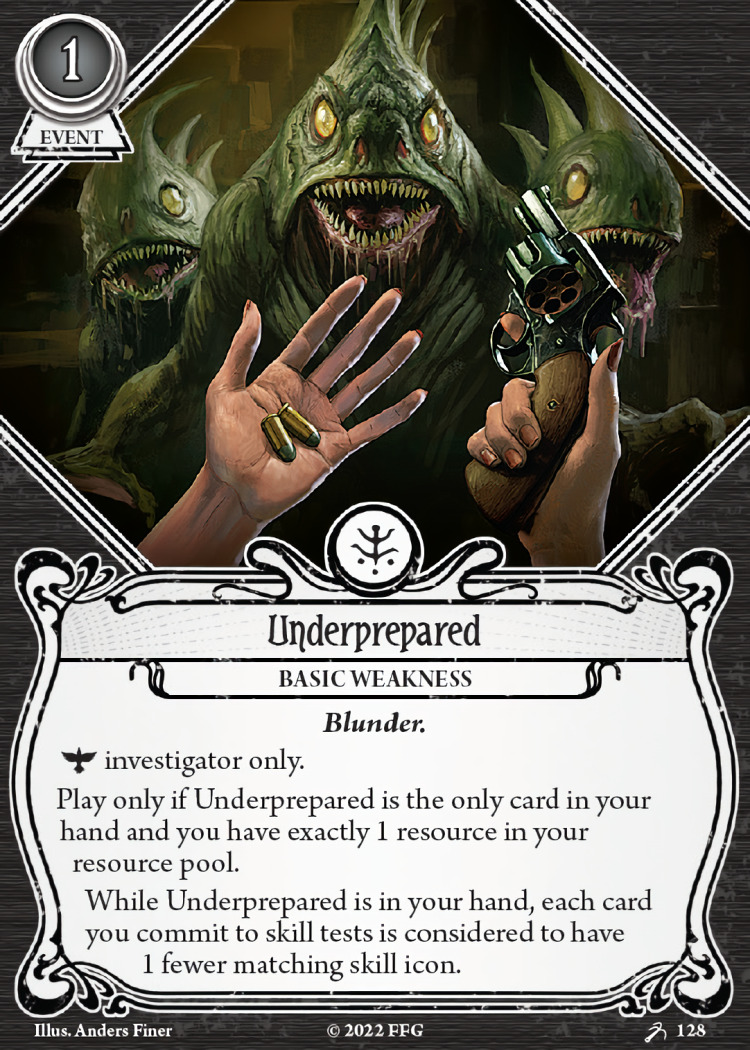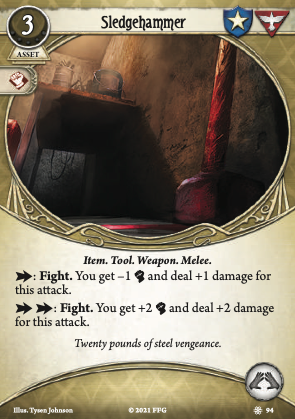
Played with a group with this card a few times now. I was not the bearer but I hate this card. It is not just because that the recovery condition is so hard, but the design is so bad : It goes against the fun of hidden information on hand.
Normal Revelation weakness requires the player to show that card right after drawing, not hard to do it correctly instead of tucking it on your hand. More advanced weakness card that stays on hand requires a bit more discipline from the player until the table knows for the first time that it is on hand, like Dark Memory, Arrogance, Whispers from the Deep, or Pay Your Due. But there is this satisfying flavorful reward when they do it correctly, even more so if they managed to keep poker face when drawing it up. Dark Pact is also good design, similar to Carcosa Hidden card. You can make up all sort of stories why you don't want to do something or even looking like you are doing your job normally, until the reveal, and it makes memorable gaming time.
Underprepared is the worst of such "cripples from hand" weakness. The owner can make mistake of committing cards normally completely forgotten about Underprepared and no one else is going to correct for him. When I am trying to help with : "You gasp just now drawing in Upkeep Phase. You sure you don't have Underprepared on hand?" it is just so weird to say every now and then they commit something.
Apparently to play this card the right way, the owner should commit and then say one of the icon mysteriously disappear. (Or in the case of single icon like Resourceful, only the effect remains.) This is not a digital game and the icons aren't going to blink away on their own. Underprepared does not say anything about revealing it, unlike Dark Memory / Pay Your Due, or not revealing itself elegantly as a part of punishment (and trying to fix it) like Arrogance / Whispers from the Deep. Not only it is prone to mistake, it also takes away from the impact of discovery. It's kind of downer...
But the suffering has just begun. The whole table would then have to keep checking for error each time the owner commit something, likely until the end of scenario because they loses all the will to get rid of it. And since the card is facing the owner's side invisible from others, it is a matter of time an entire table forgot about it since they are busy with their own calculations, at the same time owner also forgot to mention it since they are discouraged from committing for a period of time.
If the table forgot about it for some time then someone suddenly remembers it, now it also tiring to retroactively think about previous misplays whether the removed icon would change the outcome or not. It's a weakness that taxes actual willpower of all players. I would have to make a sign saying "I have Underprepared" that the bearer can choose to place on their play area after the first crippled commit the next time we got this dang weakness, or some kind of temporary insert to make it double-sided if the bearer needs help reminding.
A better design for the same effect would be a Revelation that put this card on threat area for everyone to see, and say hand size is reduced by 1 (weird by itself I know but I am trying to make an equivalent effect here), and with condition to pay 1 resource + no card on hand + only bearer can trigger to clear it.
Even then, it took too much imagination to link its mechanic to thematic sense of this card even in the original hides-on-hand version. (The awesome Oops! guys art is the only good thing that helps understanding this card.) Take the classic Dark Memory, it is easy to understand what is happening here. Her past memory from Hyperborea is acting up again and it is hurting her. By playing the event she released the thing with some effort (2 cost) and it causes some collateral damage, but she is fine for now. Dark Pact's moment of playing is the stabby-stab time, it probably took some effort (2 cost) to do so. When you play Pay Your Due you paid your due (duh), extra actions paid may meant you offer them some work to substitute the cash, and when not they get rid of your fingers or something. Event weaknesses are supposed to be designed like this. The moment of playing the event should be immediately understandable.
Now we are back to Underprepared. After getting this on hand, you have to deliberately go from very well prepared, to underprepared, to finally play this "Blunder Event" which seems to implies that up until now, while the weakness is (not so) hidden on hand, you were making blunder of being underprepared and you learned now to be more prepared, getting rid of the weakness. At this point it is already weird that the punishment of continuing to be properly prepared instead of playing your "man of blunder" role is lesser skill icon (while you can be perfectly armed with Asset cards or a lot of resources, looks very prepared to me)
Even weirder, you are actually underprepared after fixing it since you are left with nothing, you don't immediately go back to properly prepared, unlike most weakness that flavorfully implies you have won against your personal struggle and recovered, or just a singular "oh no!" moment like Darrell's Blunder weakness Ruined Film of the same trait, or Mark's Flaw weakness Shell Shock. The investigator in fact looked more prepared with spare Asset cards on hand and some spare resources to play them when decided to not fix this weakness at all.
The design is so bad and the flavor is also weird!




